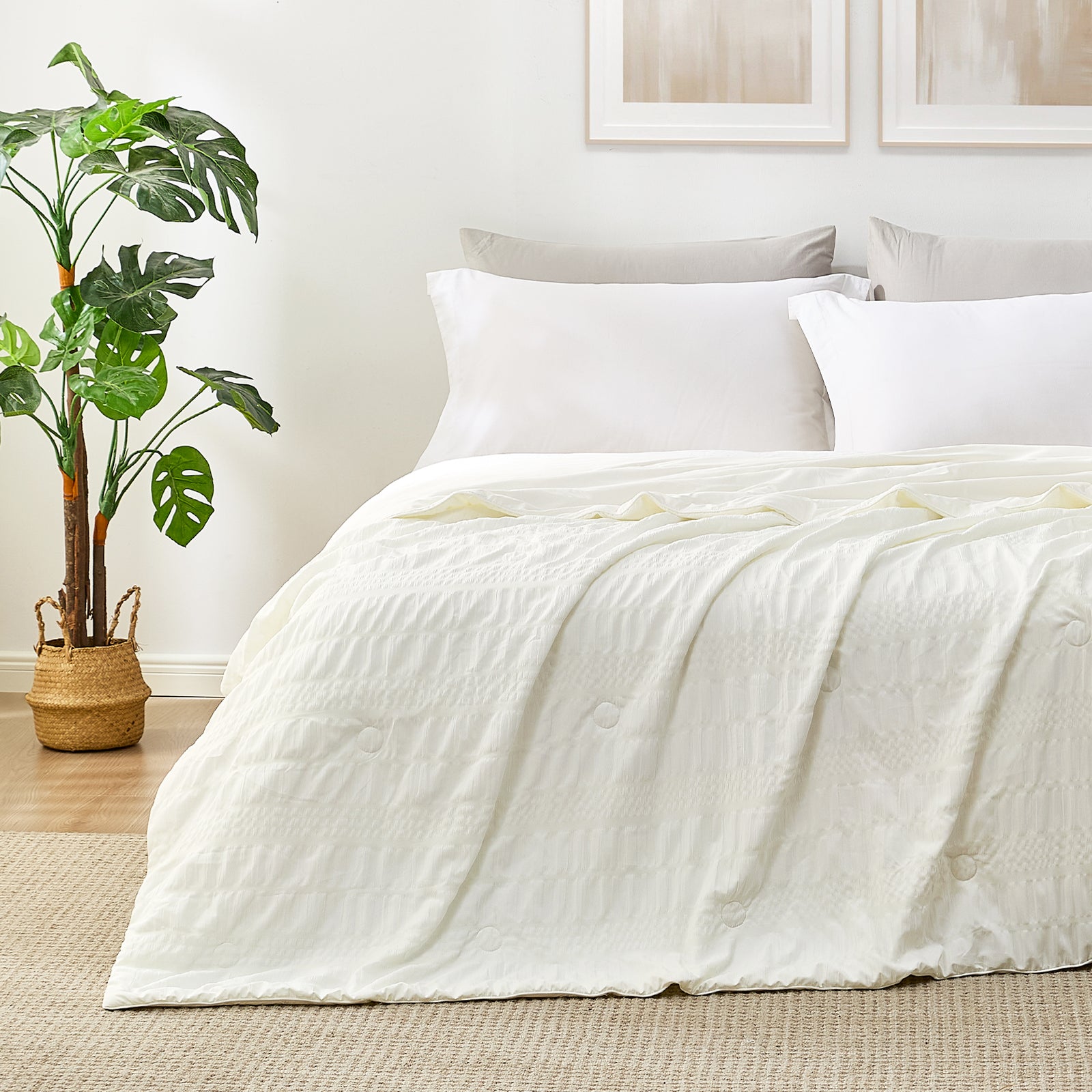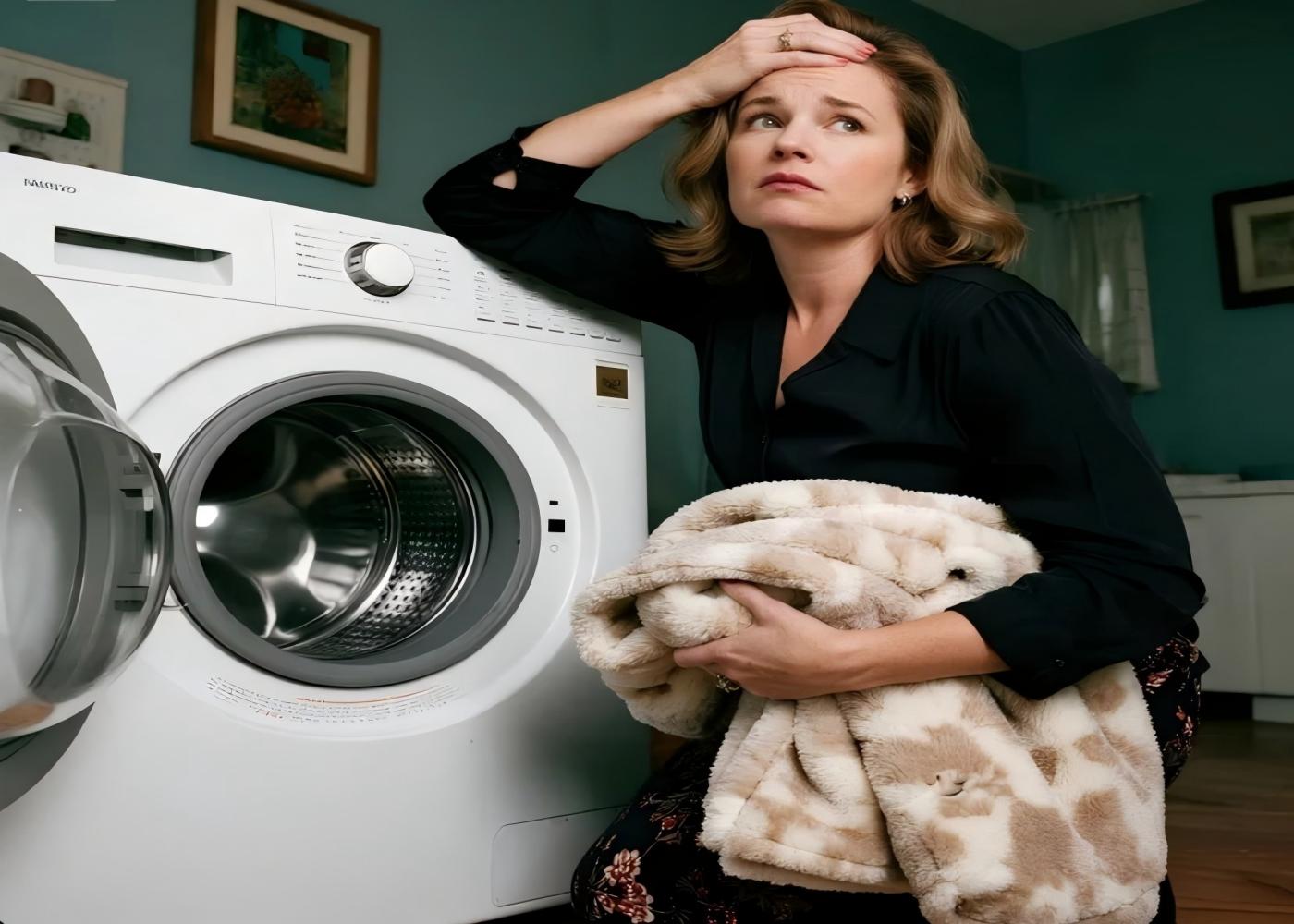A clean blanket offers a simple, profound comfort, whether it’s a cozy fleece for a movie night or a crisp cotton covering on a summer evening. To keep that blanket fresh, soft, and durable for years to come, proper washing is essential. The single most important factor in your laundry routine is the water temperature. Using the wrong setting can lead to shrinking, fading, or even irreversible fabric damage. This guide provides the detailed information you need to select the correct water temperature for any blanket, ensuring you protect your investment while achieving a perfect clean.
The Golden Rule of Blanket Care: Always Check the Label First
First thing you should do before putting your blanket in the water is to find and read its care tag. The best place to find washing directions is on this small label that was sewn into a seam by the manufacturer. It's not just an idea; it's a set of instructions made just for that item's fibers, dyes, and construction.
Because the company that made the item has tested it and knows exactly what it can and cannot handle, the directions on the tag are more important than any general advice. Usually, you'll find details about the best water temperature, the best wash mode (like normal, gentle, or permanent press), and the best way to dry the clothes. You can follow the steps below if the tag is missing or the text is so faded that it can't be read. This happens a lot with used things. Even if you don't have official directions, the safest thing to do is always to wash in cold water.
A Guide to Water Temperatures and Their Functions
Water temperature isn't just about hot or cold; each setting serves a distinct purpose in the laundry process. Selecting the right one creates a balance between cleaning efficacy, fabric preservation, and energy consumption.
Cold Water (Below 80°F / 27°C): The Gentle Guardian
The best choice is to use cold water. It does a great job of protecting delicate materials like wool, keeping bright or dark dyes from running, and conserving energy. The main problem with it is that it doesn't kill germs or dust mites when it comes to heavy dirt or oily stains, and it doesn't clean cloth either.
Warm Water (90°F - 110°F / 32°C - 43°C): The All-Purpose Cleaner
Warm water is a great way to clean clothes without hurting them. It works really well on tough synthetics like polyester and fleece, as well as on blankets that are only slightly dirty. Mild heat makes it easier for cleansers to get rid of dirt and body oils than cold water does. Be careful when using on colors that are easily damaged, as washing them in warm water over and over can cause them to fade or shrink over time.
Hot Water (130°F / 54°C and above): The Sanitizing Specialist
Only use hot water for certain jobs, mostly cleaning. It kills germs and dust mites better than anything else, which makes it perfect for long-lasting white and light-colored cotton blankets for people who are sick or have allergies. But this power comes with big risks: hot water can easily make clothes shrink, set wrinkles, and lose their color. Most things get broken by it the most, and it takes the most energy.
Temperature Recommendations by Blanket Material
The type of fabric is the most critical factor after the care label. Different materials react to heat and agitation in unique ways.
Cotton Blankets
Cotton is a resilient and popular material, but its reaction to heat depends on its treatment. For regular cleaning of colored cotton blankets, warm water is a suitable choice that balances cleaning effectiveness with color preservation. To preserve deep or vibrant colors and prevent any possibility of shrinkage, cold water is the safest route. If the blanket is white, colorfast, and needs to be sanitized, hot water can be used. Be aware that cotton that has not been pre-shrunk by the manufacturer is susceptible to shrinking in hot water.
Wool Blankets
Wool requires meticulous care. It should only ever be washed in cold water on a cycle specifically designed for wool or delicates. Heat and excessive agitation are the enemies of wool. They cause the microscopic scales on the wool fibers to interlock and bind together, a process known as felting. This results in permanent, irreversible shrinkage and a stiff, matted texture. Always pair the cold wash with a pH-neutral, wool-safe detergent to avoid stripping the natural lanolin oils from the fibers.
Fleece, Polyester, & Microfiber Blankets
These synthetic blankets are known for their softness and durability. They clean very well in warm or cold water. Cold water is the safest and most energy-efficient choice for routine washing. Warm water can provide extra cleaning power for more heavily soiled items. You must avoid hot water with these fabrics. Because they are essentially plastic-based fibers, high heat can damage or even begin to melt them. This leads to pilling, stiffness, and a loss of the fabric's soft texture over time.
Down & Down-Alternative Comforters
Whether your comforter is filled with natural goose or duck down or a synthetic down-alternative, the cleaning goal is to protect the delicate fill. Use cold water on a gentle cycle. High heat can strip the protective natural oils from down clusters, making them brittle and reducing their insulating ability. For synthetic fills, heat can cause the fine fibers to clump together, creating lumps and empty spots within the blanket. It is also advisable to use a large-capacity, front-loading washing machine. This gives the bulky item enough room to move freely, ensuring a thorough wash and rinse without compressing the fill.
Weighted Blankets
With weighted blankets, consulting the care label is absolutely critical. If the blanket is designated as machine washable, use cold water and a gentle cycle. This protects both the outer fabric and the inner filling, which typically consists of glass beads or plastic pellets. The most important consideration is weight. You must confirm that your washing machine’s motor and drum can handle the blanket's total weight when saturated with water. An overly heavy load can strain and damage the machine. In many cases, only the removable outer cover is designed to be washed.
Electric Blankets
Washing an electric blanket requires strict adherence to the manufacturer's instructions to prevent damage to the internal heating components. If the blanket is washable, the recommended method is almost always using lukewarm or cold water on a very short and gentle cycle. Before washing, you must always disconnect all cords and controls. Never allow the electronic controls to be submerged in water. Mishandling an electric blanket in the wash can create a serious safety hazard.
Advanced Blanket Care: Special Washing Considerations
Proper blanket care sometimes involves more than just choosing a temperature based on the material. Specific challenges, like sanitizing after an illness or removing tough stains, require their own special tactics.
For Sanitizing (Illness, Allergies)
You can use a different method to clean a blanket made of a material that doesn't like hot water, like wool or colored synthetics. Use a washing detergent or disinfectant additive that is liquid and is made to work well in both warm and cold water. You can also use the "Sanitize" setting on your dryer, if it has one, after washing the blanket in cold water. This setting uses high heat in a controlled way to kill germs without the agitation of a hot wash.
For Oily Stains
It can be hard to get rid of oily marks from skin, lotions, or food. Most of the time, warm water works better than cold water to break down these oils. To get the best results, treat the spot first before you wash. You can do this by rubbing a little liquid detergent or stain remover into the spot and letting it sit for a short time before washing the item.
For General Maintenance & Longevity
A simple rule can help you take care of your blankets every day and make sure they last as long as possible: if you're not sure what to do, use cold water. The formulas for current laundry detergents have come a long way. Many of them are made with enzymes that break down dirt and spots very well in cold water, which makes it a safe and reliable choice for most washing situations.
Blanket Care: Wash with Precision for Lasting Comfort
Learning how to wash your blankets the right way is easy and will make them last longer and be more comfortable. You can keep your textiles safe from damage by not using a one-size-fits-all method. Look at the care tag first. Then, you can easily choose the right water temperature once you know what kind of material your blanket is made of and what you want to clean it with. By taking these steps, you can be sure that your blankets will stay clean, soft, and welcoming for a long time.







Leave a comment
This site is protected by hCaptcha and the hCaptcha Privacy Policy and Terms of Service apply.